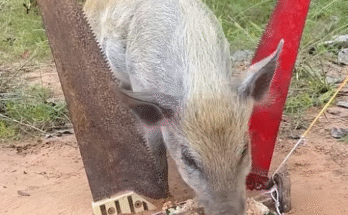Quail hunting and sustainable small-scale trapping have become increasingly popular among homesteaders, survival enthusiasts, and those interested in wildlife management. Building an amazing, creative, new DIY quail trap is a rewarding project that requires resourcefulness, careful design, and a clear understanding of quail behavior to ensure effectiveness while minimizing stress on the birds. This guide will explore the planning, construction, and safe use of a DIY quail trap while focusing on humane, practical methods suitable for beginners and experienced hobbyists alike.
Understanding Quail Behavior Before Building Your Trap
Quail are ground-dwelling birds that prefer dense cover and often travel in coveys. They are cautious but can be lured with seeds, grains, or millet, especially during early morning or late afternoon when they are most active. Quail often follow habitual paths, which makes funnel traps particularly effective. Knowing their feeding and movement patterns around your land will help you decide where to place your DIY quail trap for maximum success.
Planning Your Amazing Creative DIY Quail Trap
Before gathering materials, consider the following:
- Trap Type: The best DIY quail traps are usually funnel traps, drop-door cage traps, or net traps. Funnel traps work well because quail will walk into them for food and are unlikely to find the small exit.
- Materials: Use materials you can source cheaply or have on hand—wire mesh, PVC pipes, zip ties, wooden planks, and scrap wood are excellent for durable traps.
- Size: A 24×24 inch base with a 12-15 inch height typically works well, providing enough space for several quail without injuring them.
- Accessibility: Design your trap with an easy-access door so you can release non-target species safely.
Step-by-Step Guide to Building a Funnel-Style Quail Trap
Materials:
- 1/2 inch hardware cloth or wire mesh
- Wire cutters
- Pliers
- Zip ties or thin wire
- Wood scraps for framing (optional)
- Hinges and a latch (for access door)
- Millet or cracked corn for bait
Instructions:
- Build the Frame:
Construct a square or rectangular frame using scrap wood for stability, or skip this for a fully collapsible wire version. - Shape the Trap:
Cut the wire mesh to create the four walls and a top. Leave the bottom open or cover it with mesh if predators are a concern. - Create Funnel Entrances:
Form two funnel entrances on opposite sides of the trap using mesh cones with a small opening (about 2.5 inches in diameter). These entrances should point inward so quail can enter but struggle to exit. - Attach the Funnels:
Secure the funnels firmly with wire or zip ties, ensuring no sharp edges protrude that could injure the birds. - Add an Access Door:
Cut a small section on the top or side and attach it using hinges and a latch, allowing easy retrieval or release. - Camouflage and Placement:
Place the trap along known quail paths or feeding areas and cover it with light brush to blend into the environment. - Bait the Trap:
Scatter a trail of seeds leading into the funnels and a small pile inside to encourage quail to enter.
Tips to Make Your DIY Quail Trap More Creative and Effective
- Use a Weighted Trigger Plate: Attach a lightweight plate connected to a drop-door for a creative drop-trap mechanism, ensuring it closes gently without harming the quail.
- Incorporate a Live Camera Feed: For advanced users, adding a small Wi-Fi camera inside the trap can help monitor activity without constant disturbance.
- Use a Foldable Design: If portability is important, design your trap with collapsible mesh panels held with clips for easy transport and storage.
- Weatherproofing: Use rust-resistant mesh or coat the wooden parts with non-toxic sealant to extend your trap’s lifespan.
Humane Considerations and Legal Aspects
While building your amazing DIY quail trap is a fulfilling project, you must check local wildlife regulations before using it, as trapping laws vary by region. Always ensure your trap:
- Is checked frequently to avoid prolonged confinement.
- Allows for the immediate release of non-target species.
- Is designed to minimize injury by avoiding sharp wires and heavy mechanisms.
- Is used for appropriate, legal purposes, whether for relocation, population monitoring, or controlled harvesting.
Maintenance and Use
After building your trap:
- Inspect it for sharp points, loose wires, and broken latches before each use.
- Clean it regularly to prevent disease spread among birds.
- Re-bait as needed to maintain attractiveness, especially during dry seasons when natural food is scarce.
Place the trap in different locations based on quail movement patterns across seasons to increase your chances of success. Avoid setting traps during extreme heat to prevent heat stress in the captured birds.
Benefits of DIY Quail Traps
- Sustainable Food Source: For homesteaders or survivalists, quail can be a renewable food source, and a humane trap makes harvest easier.
- Educational Value: Building and monitoring a quail trap offers educational insights into wildlife behavior and engineering skills.
- Cost-Effective: A DIY approach saves money while allowing customization for your environment.
- Wildlife Management: For landowners, quail trapping assists in population control or relocation projects to enhance local biodiversity.
Conclusion
Creating your amazing creative new DIY quail trap is more than a practical project; it is an engaging activity that blends crafting skills, wildlife observation, and outdoor stewardship. By using simple materials and understanding quail behavior, you can build a reliable, humane trap that serves your needs, whether for wildlife management, sustainable harvest, or learning about your local ecosystem.
As you progress, consider keeping a journal of your trap’s effectiveness, bait preferences, and placement strategies to refine your methods. Remember, the most successful trappers are those who respect wildlife and prioritize humane practices alongside their goals. With care, creativity, and consistency, your DIY quail trap will become a dependable tool, providing satisfaction and practical value for many seasons to come.


